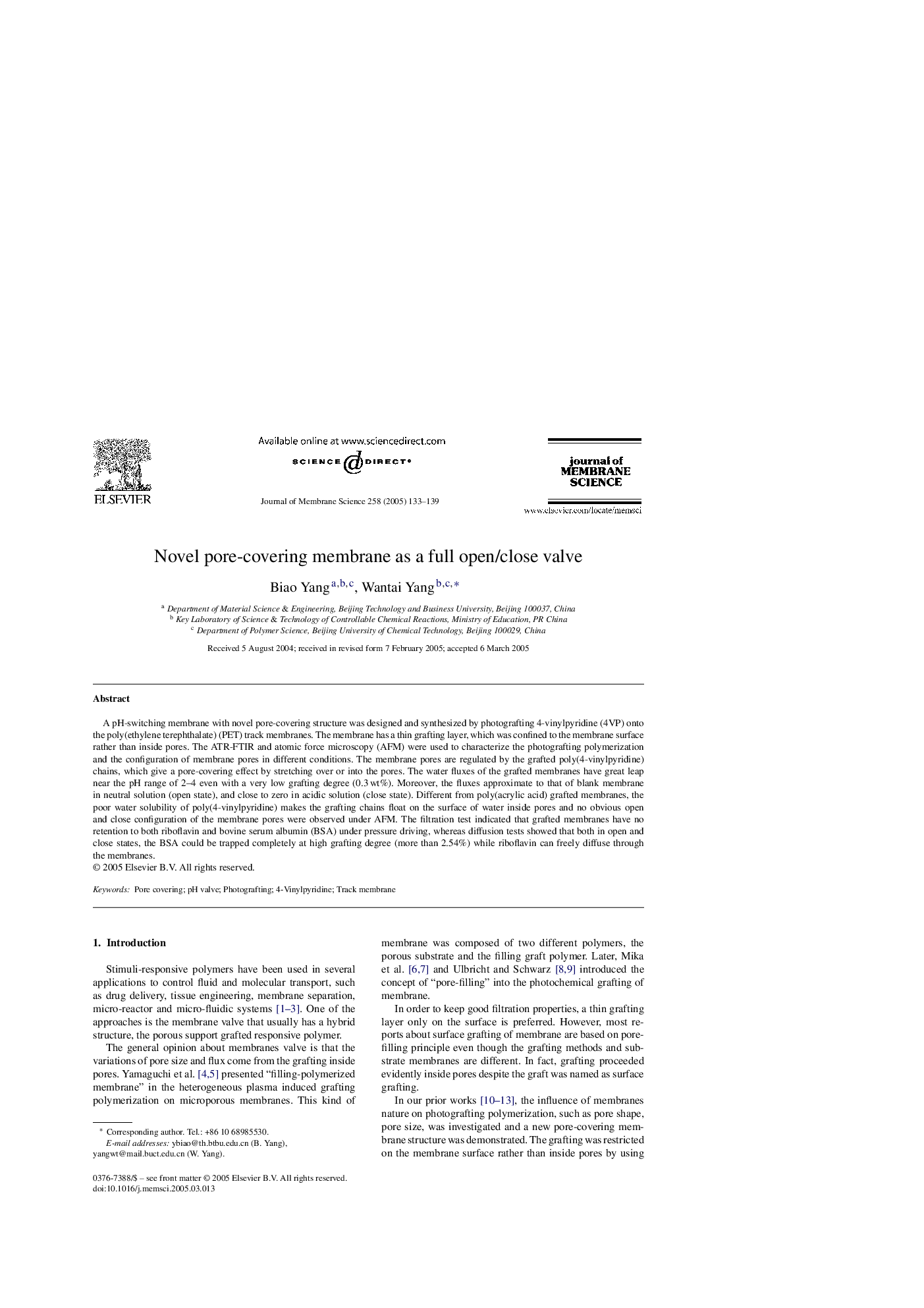| Article ID | Journal | Published Year | Pages | File Type |
|---|---|---|---|---|
| 9684767 | Journal of Membrane Science | 2005 | 7 Pages |
Abstract
A pH-switching membrane with novel pore-covering structure was designed and synthesized by photografting 4-vinylpyridine (4VP) onto the poly(ethylene terephthalate) (PET) track membranes. The membrane has a thin grafting layer, which was confined to the membrane surface rather than inside pores. The ATR-FTIR and atomic force microscopy (AFM) were used to characterize the photografting polymerization and the configuration of membrane pores in different conditions. The membrane pores are regulated by the grafted poly(4-vinylpyridine) chains, which give a pore-covering effect by stretching over or into the pores. The water fluxes of the grafted membranes have great leap near the pH range of 2-4 even with a very low grafting degree (0.3Â wt%). Moreover, the fluxes approximate to that of blank membrane in neutral solution (open state), and close to zero in acidic solution (close state). Different from poly(acrylic acid) grafted membranes, the poor water solubility of poly(4-vinylpyridine) makes the grafting chains float on the surface of water inside pores and no obvious open and close configuration of the membrane pores were observed under AFM. The filtration test indicated that grafted membranes have no retention to both riboflavin and bovine serum albumin (BSA) under pressure driving, whereas diffusion tests showed that both in open and close states, the BSA could be trapped completely at high grafting degree (more than 2.54%) while riboflavin can freely diffuse through the membranes.
Related Topics
Physical Sciences and Engineering
Chemical Engineering
Filtration and Separation
Authors
Biao Yang, Wantai Yang,
